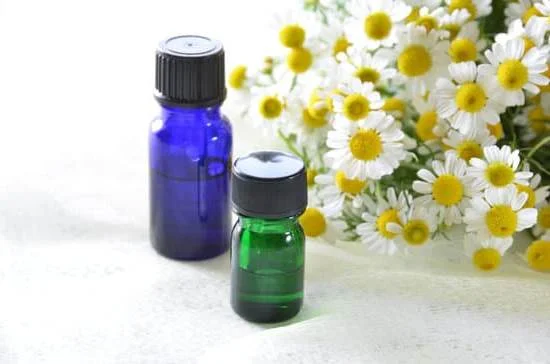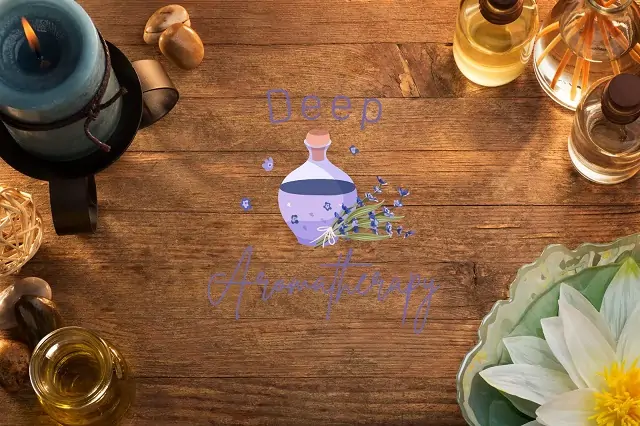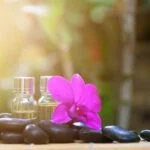Aromatherapy has long been known for its powerful ability to promote well-being and enhance relaxation. With the fast-paced nature of modern life, finding ways to de-stress and create a serene environment at home is more important than ever. That’s where aromatherapy comes in. In this article, we will explore the benefits and effectiveness of aromatherapy as the ultimate self-care practice that you can enjoy in the comfort of your own home.
Aromatherapy has a range of benefits that can significantly improve your overall well-being. From elevating your mood and reducing stress to promoting relaxation and improving sleep quality, incorporating aromatherapy into your daily routine can bring about a noticeable positive change in your life. The power lies in the use of essential oils, which are extracted from plants and contain their therapeutic properties.
Before delving deeper into the world of essential oils, it’s crucial to understand the basics. Essential oils come in various types, each with unique characteristics and qualities. It’s important to use high-quality, pure essential oils for maximum benefits. In this beginner’s guide to aromatherapy, we will provide you with an overview of essential oils and their extraction methods, as well as a comprehensive list of common essential oils used in aromatherapy along with their properties.
Creating the perfect ambiance for aromatherapy is crucial for maximizing its effects. By setting up a serene and inviting space dedicated to aromatherapy, you can fully immerse yourself in the experience. We will share tips on creating such a space, including advice on proper ventilation, lighting, cleanliness, and suitable aroma-dispersing methods like room diffusers or candles.
Experience all these wonderful benefits by introducing aromatherapy into your home today.
Essential Oils 101
Aromatherapy has gained popularity as a self-care practice due to its numerous benefits in promoting well-being. If you are new to aromatherapy, understanding the basics of essential oils is an essential first step.
Essential oils are highly concentrated plant extracts obtained through various extraction methods. It is crucial to choose high-quality, pure essential oils to maximize their benefits and ensure safety. Here are some commonly used essential oils in aromatherapy and their unique properties:
- Lavender: Known for its calming and relaxing effects, lavender oil can help reduce stress, anxiety, and improve sleep quality.
- Eucalyptus: With its refreshing and invigorating scent, eucalyptus oil is often used for respiratory issues such as congestion and sinus problems.
- Peppermint: Known for its cooling sensation, peppermint oil can alleviate headaches, mental fatigue, and aid digestion.
- Citrus oils (such as orange, lemon, or grapefruit): These uplifting oils promote a positive mood, increase energy levels, and purify the air when diffused.
Creating the perfect ambiance in your aromatherapy space can enhance your overall experience. Start by selecting a tranquil area in your home where you can relax undisturbed. Ensure proper ventilation to avoid overpowering scents and promote air circulation. Natural lighting or soft candlelight can add to the soothing atmosphere while maintaining cleanliness in your space ensures a hygienic environment for aromatherapy.
When it comes to diffusing essential oils at home, there are several options available. Essential oil diffusers disperse a fine mist of oil particles into the air using electronic technology or water as a carrier medium. Reed diffusers use reed sticks to absorb the oil from a bottle and release it slowly into the surroundings.
Aroma sprays provide instant bursts of fragrance when sprayed into the room. Consider your household setup (e.g., presence of children or pets), personal preferences, and budget when choosing the right diffusion method for you.
By understanding the basics of essential oils, creating an inviting aromatherapy space, and selecting the appropriate diffusion method, you can start your journey into the world of aromatherapy. In the next section, we will explore various massage techniques that can be combined with aromatherapy for a truly indulgent self-care experience at home.
Creating the Perfect Ambiance
When it comes to practicing aromatherapy at home, creating the perfect ambiance is essential. Your aromatherapy space should be a sanctuary that promotes relaxation and tranquility. By setting up your space thoughtfully, you can enhance the effectiveness of your aromatherapy practice and create a blissful haven within your home.
Tips for Creating a Serene and Inviting Space
- Designate a specific area: Choose a dedicated area in your home where you can comfortably practice aromatherapy. This could be a corner of your bedroom, a small nook in your living room, or even a section of your bathroom.
- Keep it clutter-free: Clear any clutter from the designated space to create an open and serene environment. A tidy space will help you focus on your aromatherapy practice without distractions.
- Consider lighting options: Soft, warm lighting helps create a soothing atmosphere. Use dimmer switches or opt for table lamps with warm-colored light bulbs to set the mood.
The Importance of Ventilation, Lighting, and Cleanliness
- Ensure proper ventilation: Good air circulation is crucial for effective aromatherapy. Make sure there is fresh air flowing through the space by opening windows or using fans if needed. This will prevent any buildup of scent and allow for better diffusion of essential oils.
- Optimize natural light: If possible, position your aromatherapy space near a window to benefit from natural light during the day. Natural light not only enhances the overall ambiance but can also uplift your mood.
- Maintain cleanliness: Keep your designated area clean and free from dust or dirt particles that may interfere with your aromatherapy experience. Regularly dust surfaces and vacuum the surrounding area to ensure an optimal environment.
Recommended Room Diffusers and Aroma-dispersion Methods
- Electric diffusers: Electric diffusers are popular and effective tools for aromatherapy. They disperse essential oils into the air using ultrasonic technology, creating a fine mist.
- Reed diffusers: Reed diffusers offer a more subtle and continuous aroma release. They consist of scented essential oils and reeds that absorb the oil and slowly release the fragrance throughout the room.
- Candle options: Aromatherapy candles are another great way to add ambiance to your space while enjoying the benefits of essential oils. Choose candles made from natural ingredients and scented with pure essential oils to avoid harmful toxins often found in synthetic fragrances.
Remember, your aromatherapy space should be a personal sanctuary that reflects your taste and style. Experiment with different decor elements, such as calming colors, plants, or soothing music, to create an environment that truly resonates with you and enhances your overall well-being.
Choosing the Right Essential Oil Diffusion Method for You
When it comes to aromatherapy, choosing the right diffusion method is crucial in order to fully experience the benefits of essential oils. Each diffusion method has its own set of pros and cons, making it important to consider your household setup, personal preferences, and budget before making a decision. Here, we will compare and contrast three popular essential oil diffusion methods: essential oil diffusers, reed diffusers, and aroma sprays.
Essential Oil Diffusers
Essential oil diffusers are a favorite among aromatherapy enthusiasts due to their efficiency and versatility. These devices disperse essential oils into the air through various methods such as ultrasonic waves or heat. Ultrasonic diffusers use water to disperse micro-particles of essential oil into the air as a fine mist, while heat-based diffusers use a heating element to evaporate the oils.
Both types of essential oil diffusers offer benefits such as creating a soothing ambiance, adding humidity to the air, and purifying indoor spaces. The choice between an ultrasonic or heat-based diffuser depends on personal preference as well as the desired intensity of scent and therapeutic effects.
Reed Diffusers
If you prefer a more subtle and constant release of fragrance throughout your space, reed diffusers may be the perfect choice for you. Reed diffusers consist of aromatic oils placed in a container with reeds that absorb the fragrance and release it gradually into the air.
One advantage of reed diffusers is their low maintenance requirement; simply flipping the reeds every so often ensures continuous diffusion. Moreover, they are often more affordable than electronic diffusers while still providing long-lasting results. Reed diffusers are also aesthetically pleasing and can be chosen based on their design to complement your home decor.
Aroma Sprays
For those seeking immediate scent gratification or who prefer a more portable diffusion method, aroma sprays are an excellent option. Aroma sprays consist of a mixture of water, essential oils, and alcohol that can be sprayed directly into the air or onto surfaces such as linens and fabrics.
Aroma sprays offer convenience and flexibility as you can easily create custom blends by mixing different essential oils to achieve your desired scent. They are also travel-friendly, allowing you to bring your favorite aromatherapy scents wherever you go. However, it’s important to note that due to the presence of alcohol in most aroma sprays, they may not be suitable for individuals with sensitivities or allergies.
Aromatherapy Massage Techniques
Aromatherapy massage combines the benefits of soothing touch and the use of essential oils to create a luxurious and therapeutic experience. It allows you to not only relax your body, but also uplift your mood and promote overall well-being. Whether you are giving yourself a self-massage or enlisting the help of a partner, incorporating aromatherapy into your massage routine can enhance the experience and take it to the next level.
To begin, it is important to choose the right essential oil for your massage. Different essential oils have unique properties that can support various desired effects, such as relaxation, stress relief, or muscle tension release. For example, lavender essential oil is known for its calming and soothing properties, while peppermint essential oil can provide a refreshing and invigorating sensation. Experiment with different blends and find what works best for you.
Once you have selected your essential oil blend, it’s time to start the massage. Here are some step-by-step instructions for both self-massage and partner-assisted massage:
Self-Massage:
- Find a comfortable position in a quiet space.
- Take a few deep breaths to help center yourself.
- Apply a small amount of the chosen essential oil blend onto your palms and gently rub them together to warm up the oil.
- Begin massaging your scalp using circular motions with your fingertips.
- Move down to your neck and shoulders, using long strokes moving from bottom to top.
- Work on each arm individually by applying gentle pressure along the muscles using your hands or fingers.
- Continue massaging other areas of your body that need attention, such as back, legs, or feet.
- Take your time with each movement and listen to what feels good for your body.
Partner-Assisted Massage:
- Select a comfortable area where you and your partner can both relax.
- Have your partner lie facedown on a massage table or bed.
- Warm up the essential oil blend by rubbing it between your palms.
- Start the massage by applying gentle pressure to the shoulders and upper back using your palms, thumbs, or knuckles.
- Slowly move down the back, focusing on any areas of tension or discomfort.
- Incorporate different massage techniques, such as kneading, circular motions, and effleurage strokes.
- Pay attention to your partner’s feedback and adjust the pressure accordingly.
- Allow your partner to relax for a few moments after the massage is finished.
By incorporating aromatherapy into your massage routine, you can create a truly blissful experience at home. Remember to always use high-quality essential oils and perform a patch test before attempting any new blends. Enjoy the wonderful benefits of aromatherapy and indulge in self-care from the comfort of your own home.
| Essential Oils for Massage | Properties |
|---|---|
| Lavender | Calming and soothing |
| Peppermint | Refreshes and invigorates |
| Bergamot | Mood-lifting and relieves anxiety |
| Eucalyptus | Cleansing and promotes respiratory health |
DIY Aromatherapy Recipes
Aromatherapy at home becomes even more enjoyable when you have the opportunity to create your own blends and products. Making your own aromatherapy recipes allows you to customize scents and tailor them to your specific needs. Whether you’re looking to create room sprays, bath salts, or massage oils, DIY aromatherapy recipes are a great way to add a personal touch to your self-care routine.
Room Sprays
- Lavender Linen Spray: Combine 1 cup of distilled water, 2 tablespoons of witch hazel or vodka (as an emulsifier), and 15 drops of lavender essential oil in a spray bottle. Shake well before each use and spritz onto linens, pillows, or in any room for a calming ambiance.
- Citrus Burst Spray: Mix 1 cup of distilled water, 2 tablespoons of witch hazel or vodka, 10 drops of sweet orange essential oil, and 5 drops of lemon essential oil in a spray bottle. Shake well and mist around your home for an uplifting blend that promotes energy.
Bath Salts
- Relaxation Blend: In a glass jar, combine 1 cup of Epsom salt with 10 drops of lavender essential oil and 5 drops of chamomile essential oil. Stir well until the oils are evenly distributed throughout the salts. Add a few spoonfuls to your bathwater for a soothing and calming experience.
- Muscle Relief Bath Salts: Mix together 1 cup of Epsom salt, 10 drops of peppermint essential oil, and 5 drops of eucalyptus essential oil. Add these muscle-relieving bath salts to warm water after an intense workout or whenever you need some relief for tired muscles.
Massage Oils
- Relaxation Massage Oil: Combine 1/4 cup of carrier oil, such as sweet almond or jojoba oil, with 10 drops of lavender essential oil and 5 drops of bergamot essential oil. Mix well and store in a dark glass bottle. Use this calming blend for a relaxing self-massage before bedtime or to unwind after a stressful day.
- Energizing Massage Oil: In a dark glass bottle, mix 1/4 cup of carrier oil with 10 drops of rosemary essential oil and 5 drops of grapefruit essential oil. Shake well before each use and apply this invigorating blend to your body for an energizing massage that uplifts your spirits.
Remember to store your DIY aromatherapy products in dark glass bottles away from direct sunlight to preserve their potency. Enjoy experimenting with different blends and scents to create the perfect aromatherapy experience at home.
Now that you have learned how to make your own aromatherapy blends and products, it’s time to embrace the power of aromatherapy and transform your home into a blissful haven. Try out different recipes and find what works best for you.
Aromatherapy for Different Purposes
Aromatherapy is not only a delightful practice, but it can also be utilized to address a variety of everyday challenges. By harnessing the power of essential oils, you can target specific issues in your life and enhance your well-being. Whether you are looking to relieve stress, find headache relief, or improve relaxation and focus, aromatherapy has a solution for you.
Stress relief is one of the most sought-after benefits of aromatherapy. Certain essential oils such as lavender, chamomile, and ylang-ylang are known for their calming properties and can help alleviate feelings of anxiety and tension. These oils can be used in various ways, including diffusion, massage, or adding them to bath salts or room sprays.
For those seeking headache relief, peppermint oil is highly effective due to its analgesic properties. When applied topically or inhaled through diffusion, it can provide immediate soothing relief from headaches and migraines. Eucalyptus oil is another option that can help alleviate congestion-related headaches by clearing the sinuses.
If relaxation and sleep improvement are your goals, consider using essential oils like clary sage, bergamot, or frankincense. These oils have sedative effects and can assist in promoting a peaceful state of mind and enhancing sleep quality. Diffusing these oils before bedtime or using them in a relaxing massage blend will facilitate relaxation and encourage restful sleep.
Enhanced focus and concentration are crucial for productivity during work or study sessions. Essential oils like rosemary and lemon are known for their stimulating properties that can boost mental clarity and improve cognitive function. Inhaling these scents through diffusion or utilizing them in aroma sprays may help maintain alertness and increase focus.
To make the most out of aromatherapy for different purposes, it’s important to choose the appropriate application method. Direct inhalation, diffusion, massage, or creating your own blends are all effective ways to reap the benefits of essential oils. Experiment with different oils and techniques to find what works best for you and your specific needs.
Here is a table highlighting some common purposes for aromatherapy and the recommended essential oils
| Purpose | Recommended Essential Oils |
|---|---|
| Stress Relief | Lavender, Chamomile, Ylang-Ylang |
| Headache Relief | Peppermint, Eucalyptus |
| Relaxation and Sleep Improvement | Clary Sage, Bergamot, Frankincense |
| Focused Concentration | Rosemary, Lemon |
Incorporating aromatherapy into your daily routine can bring positive changes to your overall well-being. Whether you want to alleviate stress, find relief from headaches, enhance relaxation and sleep, or improve focus and concentration, targeted aromatherapy solutions are readily available.
Experiment with different essential oils and their methods of application to discover the perfect blend that addresses your specific everyday challenges. Embrace the power of aromatherapy and transform your home into a blissful haven where you can overcome life’s hurdles with ease.
Precautions and Safety Measures
Aromatherapy is generally safe and well-tolerated when used properly, but it is important to take certain precautions and follow safety measures to ensure a positive and enjoyable experience. This section will outline essential do’s and don’ts of aromatherapy at home to help you make informed decisions and avoid any potential risks.
Firstly, it is crucial to always use high-quality, pure essential oils from reputable sources. Look for oils that are labeled as therapeutic grade or organic, as they are more likely to be free from additives or contaminants. Dilution is also key when using essential oils topically.
Most essential oils should be diluted in a carrier oil before applying them to the skin to reduce the risk of irritation or allergic reactions. A common dilution ratio is 2-3 drops of essential oil per teaspoon of carrier oil.
Additionally, it is important to be aware of any potential allergies or sensitivities you may have towards specific essential oils. Perform a patch test on a small area of skin before using a new oil for the first time. This can help determine whether you have any adverse reactions such as redness, itching, or swelling.
Never ingest essential oils unless under the guidance of a qualified healthcare professional. Essential oils are highly concentrated and not intended for internal use without proper knowledge and supervision. When diffusing essential oils, always follow the manufacturer’s instructions for your particular diffuser and never leave it unattended.
Certain groups of people, such as pregnant women, individuals with asthma or respiratory conditions, young children, and pets, may have specific considerations or may need to avoid certain essential oils altogether. It is advisable to consult with a healthcare professional or aromatherapist if you fall into one of these categories or have any existing medical conditions.
Lastly, proper storage of your essential oils is crucial in maintaining their potency and prolonging their shelf life. Store them in dark glass bottles away from direct sunlight and heat sources. Keep them out of reach of children and pets, preferably in a cool, dark place.
By adhering to these precautions and safety measures, you can fully enjoy the benefits of aromatherapy while ensuring a safe and pleasant experience in the comfort of your own home.
Conclusion
In conclusion, aromatherapy has proven to be an effective and versatile self-care practice that can transform your home into a blissful haven. Throughout this article, we have explored the benefits of aromatherapy in promoting well-being and learned about essential oils, creating the perfect ambiance, diffusion methods, massage techniques, DIY recipes, targeted solutions for everyday challenges, and safety precautions. Now it’s time to embrace the power of aromatherapy and bring its transformative effects into our lives.
Aromatherapy offers numerous benefits for our physical, mental, and emotional health. It can elevate our mood, reduce stress, promote relaxation, improve sleep quality, enhance focus, relieve headaches, and so much more. By incorporating aromatherapy into our daily routines at home, we can create a sanctuary where we can unwind, rejuvenate ourselves, and find solace from the hustle and bustle of everyday life.
I encourage you to explore the world of essential oils and experiment with different aromatherapy techniques in your home. From diffusing essential oils to creating personalized blends for specific purposes like stress relief or relaxation, there are countless ways to enjoy the benefits of aromatherapy. Remember to use high-quality essential oils for maximum effectiveness and ensure proper storage to maintain their potency.
As you embark on your aromatherapy journey at home, I invite you to share your favorite experiences or any questions you may have in the comments section below. Let’s support each other in embracing the power of aromatherapy and creating blissful havens within our homes. So go ahead – surround yourself with the beautiful scents of nature and let aromatherapy uplift your mind, body, and soul.
Frequently Asked Questions
How can I do aromatherapy at home without a diffuser?
Aromatherapy can be done at home without a diffuser by using alternative methods to disperse the essential oils into the air. One option is to create a room spray by combining a few drops of essential oil with distilled water in a spray bottle and misting it around the room. Another method is to put a few drops of essential oil onto cotton balls or tissues and place them strategically around your space.
For example, you can put them under your pillow for a calming effect during sleep or near an open window for a refreshing scent. Additionally, you can add essential oils to your bathwater for a soothing aromatherapy experience.
What is the proper way to apply aromatherapy?
The proper way to apply aromatherapy depends on the desired effect and the type of essential oil being used. Generally, there are three primary methods: inhalation, topical application, and ingestion (though ingestion should only be done under the guidance of a qualified professional). Inhalation involves adding a few drops of essential oil to a bowl of hot water or using an inhaler/diffuser to breathe in the aroma.
Topical application involves diluting essential oils with carrier oils like coconut or jojoba oil and massaging them into the skin, ensuring they don’t come into contact with sensitive areas or broken skin. It’s important to research each specific essential oil before use, as some may have safety precautions or specific guidelines for usage.
How do you make your house smell good naturally essential oils?
To make your house smell good naturally using essential oils, there are several options that don’t require chemical-laden air fresheners or candles. One method is by creating your own DIY reed diffusers: mix ¼ cup carrier oil (such as sweet almond or fractionated coconut oil) with 15-20 drops of your preferred essential oils in a glass container, then insert bamboo reeds into the mixture so they can absorb and release the fragrance naturally into the room over time.
Another way is by making linen sprays: mix distilled water, witch hazel, and a few drops of essential oils in a spray bottle, then lightly spritz bed linens, curtains, or upholstery to infuse the space with a pleasant scent. Additionally, you can simmer a pot of water on the stove with added essential oils like citrus or spices to create an aromatic steam that will freshen up your home.

Are you looking for a natural way to improve your health and wellbeing?
If so, aromatherapy may be the answer for you.





